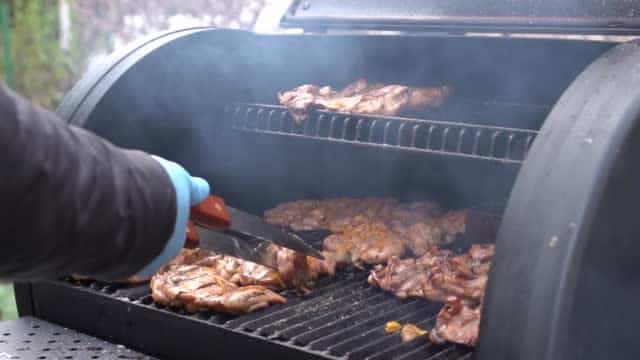Unlocking Vertical Smoker Potential

Vertical smokers occupy coveted real estate in the passionate pitmaster’s arsenal thanks to exceptional capacity and temperature control abilities. But with varied configurations now available, it helps understanding functionality differences across common vertical smoker categories.
Charcoal Vertical Smokers
Arguably the most ubiquitous backyard smoker type, these versatile units burn charcoal as primary fuel. Models like the Weber Smokey Mountain feature a vertical bullet-type shape with a water pan acting as a heat sink to smooth temperatures. Dual cooking grates provide ample room for occasion-sized cooks. Control vents positioned at charcoal tray, bowl midsection and lid work in concert to dial in airflow – this fine tuning smoker climate. Savvy pitmasters manipulate vent positioning to nail the ideal 225°F sweet spot for low and slow smoking up to 14 hours unattended. Costs run from $300 to $600.
Propane Vertical Smokers
Taking ease-of-use up a notch, propane-fired vertical units remove ash cleanup and temperature spiking concerns. A gas burner or concealed flame box generates cooking heat while dedicated wood chip trays produce smoke. Box-style cabinet construction allows huge cooking capacity – some Cafe-series models from Cuisinart span over 1,500 square inches across multiple shelves. Burners output up to 21,000 BTU for adaptable smoking or high-heat searing. While wood chips impart authentic flavor, expect to refill the tray more frequently than charcoal options. Prices range from $300 to $800.
Electric Vertical Smokers
The ultimate in set-and-forget operability, electronically controlled vertical smokers achieve incredible precision thanks to digital interfaces. Users input desired temperatures and integrated thermostat technology controls heating elements to nail target metrics. For instance, the Bradley Smoker BS611WS houses custom smoker bisquettes feeding from a hopper every 20 minutes for constant, even smoke generation. Its digital display alerts when bisquettes run low or food is prepped. Pros value the consistency and 400+ hour element lifespan. Just beware the $800+ price tags.
DIY Vertical Smokers
Avant-garde smoking artists handcraft unique vertical smokers from materials like 55-gallon drums, large metal tanks or custom welding projects. Heavy gauge steel offers durability while creative smokestack placement encourages heat convection. Small welding shops sell builds online or build custom rigs to your desired size and smoke output specs. DIY models typically burn wood, charcoal or combustion blended fuels with manual temperature control. Prices run the gamut based on materials and workmanship.
In total, vertical design translates to amplified capacity and temperature regulation – two paramount pitmaster priorities. Thanks to diverse power sources suiting assorted needs and budgets, vertical smokers place legendary barbecue within reach across the smoking spectrum.
Final Thoughts
Unlocking the potential of vertical smokers opens the door to a world of versatile and flavorful barbecue experiences. From optimizing space to harnessing the benefits of even heat distribution, vertical smokers offer a unique approach to mastering the art of smoking. As enthusiasts explore the diverse possibilities of these vertical wonders, they discover a key to unlocking rich, smoky profiles and achieving culinary excellence. Embrace the vertical smoker’s potential to elevate your barbecue game, and savor the rewarding journey of flavor exploration and mastery.
